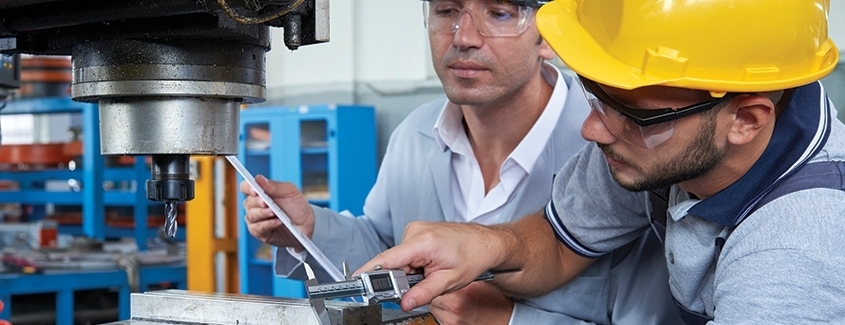Manufacturing has always correlated with rapid economic growth. Time and time again we’ve seen manufacturing businesses create jobs and elevate a community’s standard of living. The development of a factory is the saving grace of poor communities all over the world.
The International Monetary Fund and U.S. government projections expect our manufacturing sector to grow by 3 or 4 percent over the next two years. It’s good business for investors, too: we add $1.37 to our national economy for every dollar invested in manufacturing. Despite this optimistic future, the industry is poised to face some familiar challenges.
Like other wealthy nations, the general population of the United States is aging. By 2025, nearly 25% of all persons will be older than 60.
The manufacturing sector is experiencing this trend the hardest. In 2000, the median age of the manufacturing workforce was 40.5 years old. In 2012, the median age climbed to 44.7 years, significantly higher than other sectors.
This aging of the industry has created a skills gap that is getting wider every year. Over the next decade, two million of the available 3.5 million manufacturing jobs will go unfulfilled. Employers won’t be able to find skilled workers.
Experts believe the talent gap is caused by a number of reasons:
- Baby boomers are beginning to retire in tremendous numbers, leaving more positions vacant than the up-and-coming workforce can fill.
- Trending economic expansion continues to create more jobs (about 700,000 over the next decade) that can’t be filled.
- There is a negative image of the manufacturing industry among younger generations. Even though executives are willing to pay higher than market rate, positions remain unfilled.
- There has been a slow decline of technical education in public schools, leading to fewer graduates pursuing science, technology, engineering, and math degrees.
The Manufacturing Institute found that a majority of manufacturing executives consider talent loss their toughest struggle. They fear the skills gap will cause an inability to create and implement new technologies to meet customer demand and increase productivity. Naturally, these challenges will deter profitability and growth.
The industry has come become quite diverse. Automation, data, robotics and engineering play a big role in nearly every manufacturing facility in the United States. Manufacturing is expected to continue changing, which means the industry desperately needs tech-savvy young people who can adapt to new processes and technologies.e a long way. Instead of easy-to-replace repetitive jobs, industrial operations hav
Admittedly, attracting a new workforce is challenging. In order to maintain some manufacturing status in the global economy, we have to infuse the industry with younger talent. Companies need to feed young people’s interest and show that manufacturing can be a rewarding career.
This can be best achieved by creating partnerships with schools (at the secondary and collegiate levels) to invest in technical education and offering extra-curricular programs that inspire manufacturing-related skills.
To combat the skills gap, employers need to view training and workforce development as an investment in their company, not an inconvenient expense. They must build never-ending learning into their employees’ roles so skills can stay sharp and agile. Furthermore, they need to find effective ways to transfer the knowledge of their aging population to the young recruits or risk losing competitive advantages.


